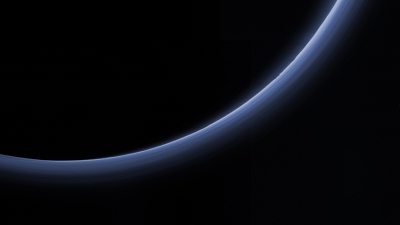
Created as surface ice vaporizes under the distant light of the Sun, Pluto’s atmosphere is predominantly nitrogen gas, along with small amounts of methane and carbon monoxide. Haze particles form high up in the atmosphere, more than 20 miles above the surface, as methane and other gases react to sunlight, before slowly raining down to the icy surface.
New Horizons found evidence of these particles when it sent back images showing a blue-tinted haze to Pluto’s atmosphere. Now, SOFIA’s data fills in even more details by discovering that the particles are extremely small, just 0.06-0.10 microns thick, or about 1,000 times smaller than the width of a human hair. Because of their small size, they scatter blue light more than other colors as they drift toward the surface, creating the blue tint.
With these new insights, scientists are reevaluating their predictions on the fate of Pluto’s atmosphere. Many forecasts indicated that as the dwarf planets moved away from the Sun, less surface ice would be vaporized — creating fewer atmospheric gases while losses to space continued — eventually leading to atmospheric collapse. But rather than collapsing, the atmosphere appears to change on a shorter cyclical pattern.
Picture Credit : Google

